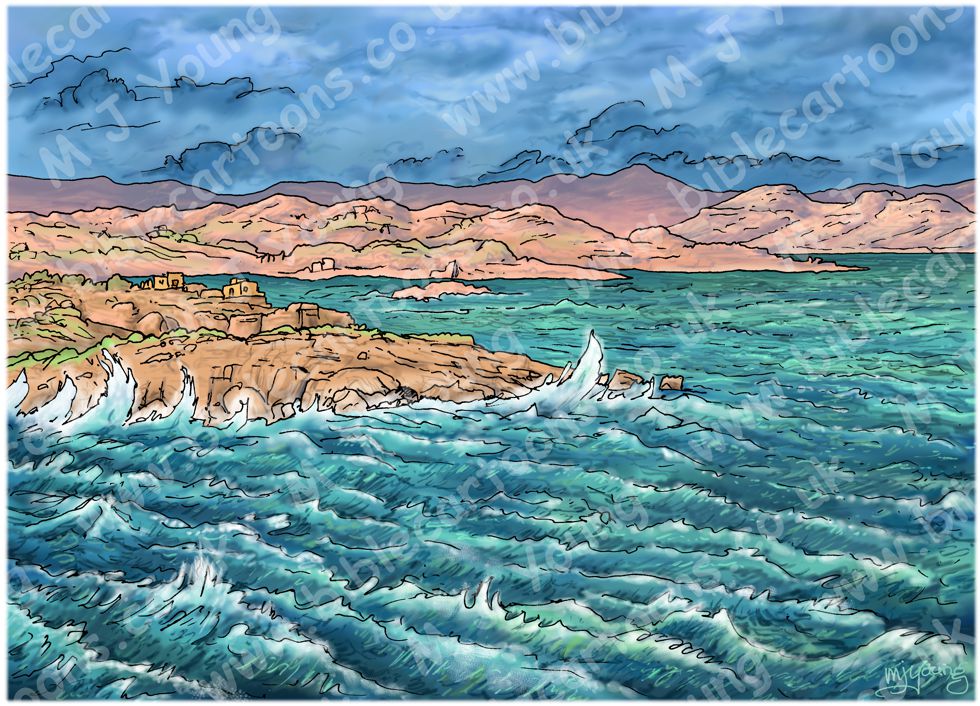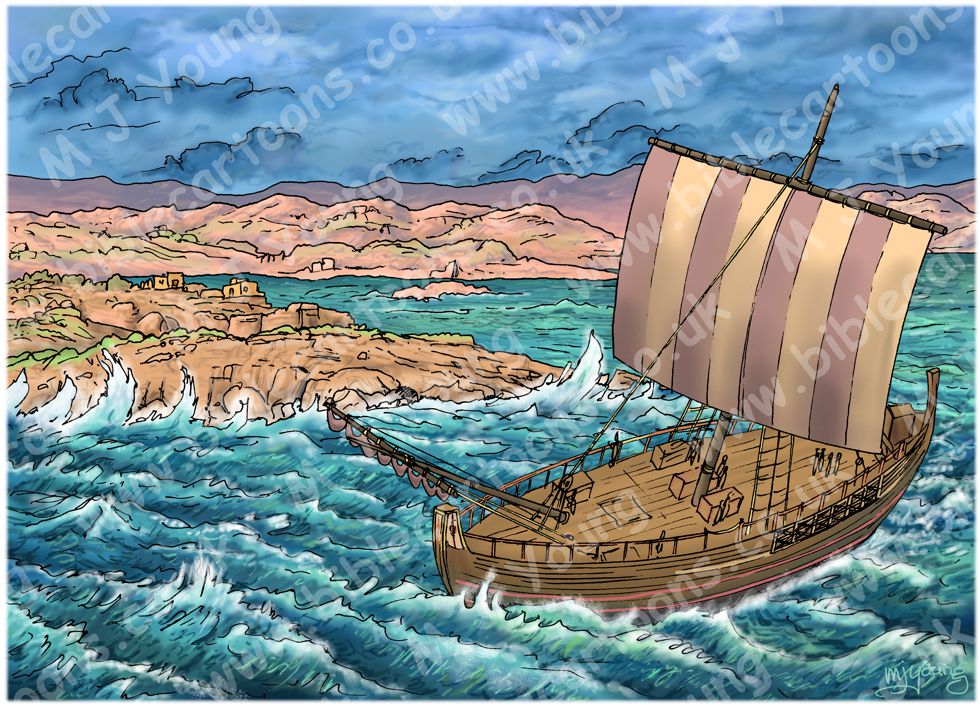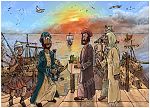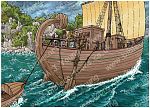Bible Cartoon: Acts 27 - Paul sails for Rome - Scene 04 - Winds against us
Click on Add to cart button below shopping cart.
Purchased Bible Cartoons do not have watermarks. Links to Cartoons provided on email once purchase is completed.Bible Book: Acts
Bible Book Code: 4402700401
Scene no: 4 of 7
Bible Reference & Cartoon Description
Acts 27:4-5 (ANIV)
4 From there we put out to sea again and passed to the lee of Cyprus because the winds were against us. 5 Then we had sailed across the open sea off the coast of Cilicia and Pamphylia, we landed at Myra in Lycia.
DRAWING NOTES:
TIME OF DAY:
Unspecified in Bible narrative. I’ve set this scene in the afternoon.
LIGHTING NOTES:
Diffuse sunlight illuminates this scene from above.
CHARACTERS PRESENT:
None visible.
RESEARCH/ADDITIONAL NOTES:
This picture shows the ship Paul is travelling on, sailing to the south of the Mediterranean island of Cyprus. It is sailing a zigzag course, slowly making it’s way to the west of Cyprus, as it is facing a strong headwind, in fact “To the lee of Cyprus” in the Bible (Acts 27:4) refers to sailing on the sheltered side of Cyprus to avoid strong winds. It means the ship sailed south of the island, taking advantage of the wind protection offered by the landmass. This was a strategic navigation choice to navigate difficult weather conditions during the ship’s journey.
Here is the scene without the ship in the foreground.

Background of Acts 27 – Paul sails for Rome – Scene 04 – Winds against us
Click on the colour bar below to view/buy this Background:
Background of Acts 27 – Paul sails for Rome – Scene 04 – Winds against us
A note about sailing against the wind.
A sailing ship cannot sail directly into the wind. Instead, it uses a technique called tacking to make progress upwind by zigzagging across the wind. Tacking involves turning the boat’s bow into the wind, causing the sails to switch from one side to the other, and then sailing on the opposite course. This allows the ship to move forward towards its destination, even when the wind is coming from the opposite direction.
Tacking:
Tacking is the process of turning the boat into the wind, switching the side that faces into the wind. This maneuver allows the sails to catch the wind from the opposite side and propel the boat forward.
Beating:
Beating to windward is a series of tacks, allowing a sailboat to move gradually towards a destination that is higher in the wind than the vessel can directly sail.
Close-hauled:
A sailboat can’t sail directly into the wind. The closest it can sail to the wind is called close-hauled, typically at an angle of about 45 degrees to the wind.
Windward and Leeward:
When a boat is sailing, the side of the boat that is away from the wind is called the leeward side, and the side facing into the wind is called the windward side.
Jibing (Gybing):
A jibe or gybe is a similar manoeuver to tacking, but it involves turning the boat’s stern through the wind, rather than the bow. This is used when sailing downwind.
A note about Myna.
“Myra, one of the most important towns of ancient Lycia, located near the mouth of the Andriacus River on the Mediterranean Sea in southwest Turkey. Its early history is unknown. St. Paul is known to have visited the city, and in the 4th century St. Nicholas was its bishop. The Eastern Roman emperor Theodosius II made Myra the capital of Byzantine Lycia until the city fell to the caliph Harun al-Rashid in 808 A.D. The western scarp of its acropolis, dating from the 5th to the 3rd century B.C., was sculptured into a large number of rock-cut sepulchres, imitating wooden houses and shrines, with pillared facades and reliefs. At the foot of the acropolis are the remains of a magnificent theatre, one of the largest and finest in Anatolia.”
[Source: https://www.britannica.com/place/Myra]





